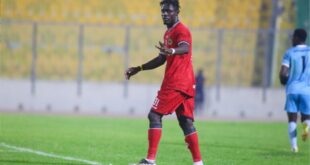Sri Lanka’s President Gotabaya Rajapaksa fled his official residence on Saturday shortly before protesters, angered by an unprecedented economic crisis, stormed and overran the compound.
Huge crowds had surrounded the leader’s home to demand his resignation, blaming government mismanagement for the painful downturn.
As protesters surged at the gates of the President’s Palace, troops guarding the compound fired in the air to hold back the tide until Rajapaksa was safely removed, a top defence source told AFP on condition of anonymity. “The president was escorted to safety,” the source added. “He is still the president, he is being protected by a military unit.”
Prime Minister Ranil Wickremesinghe, who would assume the presidency in the event of Rajapaksa’s resignation, has called an urgent cabinet meeting to discuss a “swift resolution” to the political crisis, his office said. Members of the crowd broadcast live footage on social media showing hundreds of people walking through the President’s Palace.
The colonial-era state mansion is one of Sri Lanka’s key symbols of state power and officials said Rajapaksa’s departure raised questions as to whether he intended to remain in office. “We are awaiting instructions,” a top civil servant told AFP. “We still don’t know where he is, but we know he is with the Sri Lanka navy and is safe.”
Colombo’s main hospital said 14 people were being treated there after being hit by tear gas canisters.
‘Not a deterrent’
Sri Lanka has suffered through months of food and fuel shortages, lengthy blackouts and galloping inflation after running out of foreign currency to import vital goods. Thousands of people had poured into the capital for the demonstration, the latest expression of unrest sparked by the crisis.
Police had withdrawn a curfew order issued on Friday after opposition parties, rights activists and the bar association threatened to sue the police chief.
Thousands of anti-government protesters ignored the order and even forced railway authorities to operate trains to take them to Colombo for Saturday’s rally, officials said.
“The curfew was not a deterrent, in fact it encouraged more people to get on the streets in defiance,” the defence official said. “Passengers had commandeered trains to reach Colombo.”
The country has nearly exhausted already scarce supplies of petrol, but protesters backed by the main opposition parties hired private buses to travel to the capital.
Demonstrators have camped outside Rajapaksa’s seafront office to demand his resignation over the government’s mismanagement of the crisis. Soldiers armed with assault rifles were bussed into Colombo on Friday to reinforce police guarding Rajapaksa’s official residence.
Authorities said they had deployed nearly 20,000 troops and police officers for a security operation to protect the president. Sri Lanka has defaulted on its $51 billion external debt and has been in bailout talks with the International Monetary Fund.
Nine people were killed and hundreds wounded when clashes erupted across the country after Rajapaksa loyalists attacked peaceful protesters outside the president’s office in May.
 Home Of Ghana News Ghana News, Entertainment And More
Home Of Ghana News Ghana News, Entertainment And More





